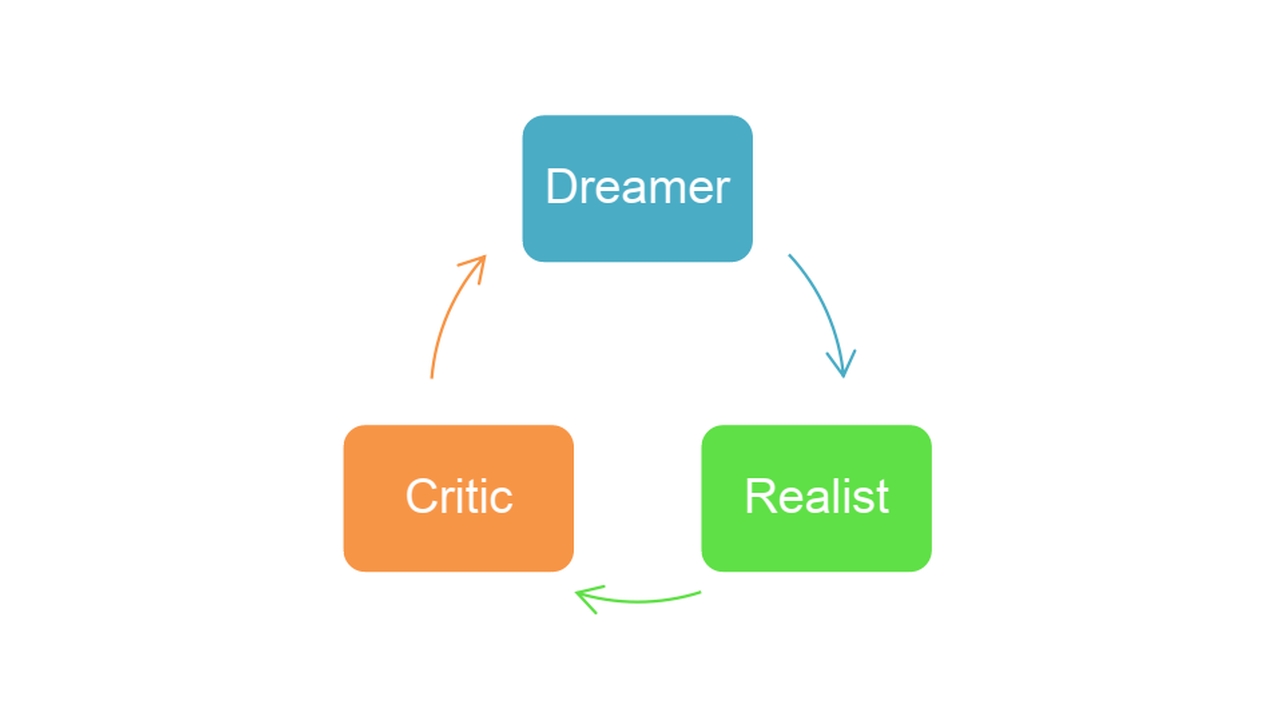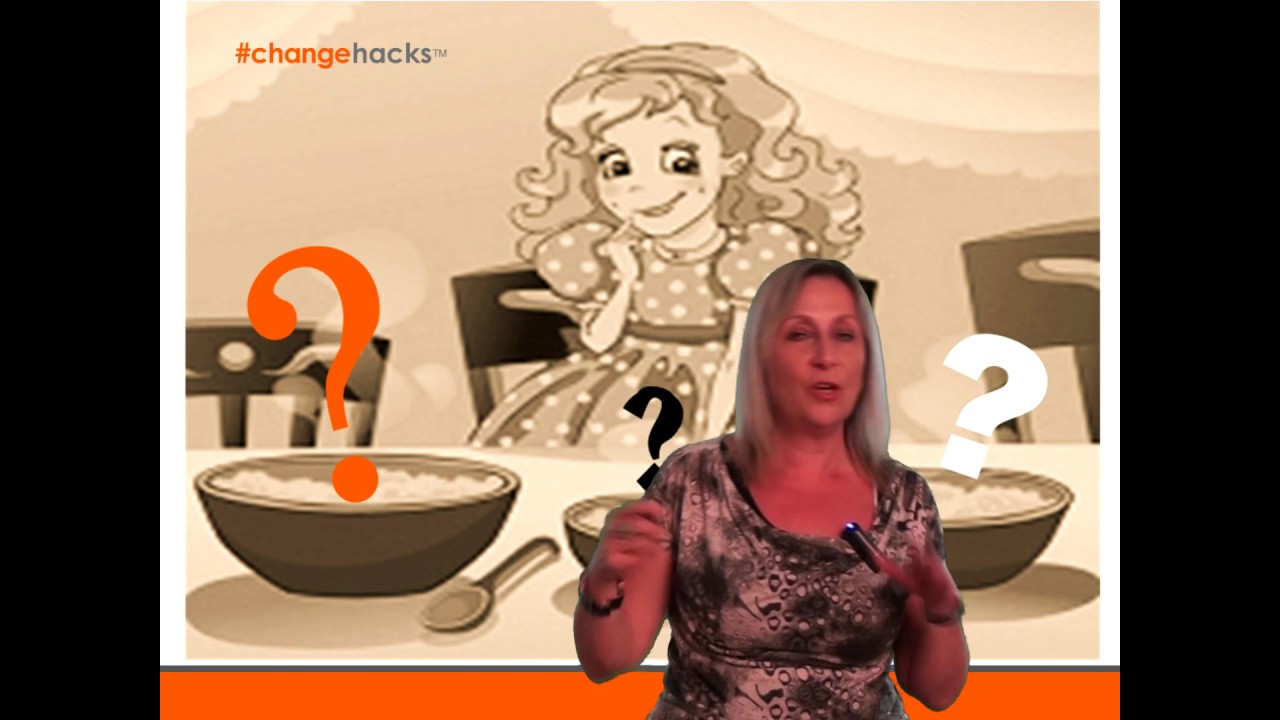
Change planning: Dreamer, realist, critic
Edited by Gabriele Bammer. Originally published on the Integration and Implementation Insights blog.
How can change be planned for in an effective way that creatively develops new ideas, plans the practicalities of their implementation and assesses risks?
The process described here is also referred to as Walt Disney circle, Disney creative strategy, and Disney brainstorming method, and is adapted from Nauheimer (1997).
Planning change involves four phases. The first three phases, in turn, are to 1) create new ideas, 2) plan the practicalities of their implementation and 3) assess the risks. Phase 4 is an iterative phase that reviews further input needed in each of the first three phases.
The process is conceived as involving three roles: dreamer, realist and critic. The idea of separating the process into these three roles is to ensure that each is fully considered without interference from the others. For instance the aim is to allow the creative ideas to be fully developed, without being stymied by criticism. One person or a group could take all three roles in turn or different people could take different roles. What is important is that all three roles are fully brought into play.
Phase 1: The Dreamer
This role involves creatively developing new ideas, with an “anything is possible” attitude. It specifically avoids considering practicalities or constraints. Useful questions are:
- What do we want to do?
- Why do we want to do it?
- What are the benefits?
- How will we know that we have achieved the benefits?
- When can we expect to get them?
- Where do we want this idea to get us in the future?
Phase 2: The Realist
This role involves planning for the implementation of any new idea by considering the practicalities. It avoids specifically considering constraints and takes an “how do we make this work” attitude. Useful questions are:
- When will the overall goal be completed?
- Who will be involved and what responsibilities will they have?
- How – specifically and step by step – will the idea be implemented?
- What will provide on-going feedback to show whether we are moving toward or away from the goal?
- How will we know that the goal is achieved?
Phase 3: The Critic
This role involves identifying and assessing risks associated with any new idea, as well as looking for ways to manage potential problems. It takes a “what could go wrong and how can we avoid that” attitude. Useful questions are:
- Who will this new idea affect and who will make or break the effectiveness of the idea?
- What are their needs?
- Why might someone object to this plan or idea?
- What positive gains are there in the present way(s) of doing things?
- How can you keep the positive gains when you implement the new idea?
- When and where would you not want to implement the new idea?
- What is currently needed or missing from the plan?
Phase 4: Iteration to fill critical gaps
Any change proposal is likely to be incomplete and to be missing some important information. In seeking to fill those gaps or seek that information, it is useful to employ the dreamer, realist and critic roles again. For example, if a significant piece of information is missing:
- the Dreamer role would involve looking creatively for ways to get that information
- the Realist role would involve the practicalities of those ideas
- the Critic role would involve examining the adequacy of the information found or likely to be found.
Developing a realistic plan for action can involve going through the whole process several times to refine an idea into realisable steps.
What has your experience been in planning for change? Have you used this process or one like it? How well did it work? Are there other processes that you would recommend?
Reference:
Nauheimer, H. (1997). The change management toolbook. A collection of tools, methods and strategies. (Online – open access): https://www.slideshare.net/luismolina787/the-original-changemanagementtoolbook-copia
(The change planning tool in this collection is based on Dilts, R. B. (1994). Strategies of genius – Part I. Meta Publications: Capitola, California, United States of America, and it is worth noting that neurolinguistic programming, which is the basis of this book, has been discredited as a pseudoscience.)
A description of “Editor’s additions” is available in https://i2insights.org/index/integration-and-implementation-sciences-vocabulary/. This editor’s addition was produced by Gabriele Bammer using the reference above.
Biography:
 |
Gabriele Bammer PhD is Professor of Integration and Implementation Sciences (i2S) at the National Centre for Epidemiology and Population Health at The Australian National University in Canberra. i2S provides theory and methods for tackling complex societal and environmental problems, especially for developing a more comprehensive understanding in order to generate fresh insights and ideas for action, supporting improved policy and practice responses by government, business and civil society, and effective interactions between disciplinary and stakeholder experts. She is the inaugural President of the Global Alliance for Inter- and Transdisciplinarity (2023-25). |
Article source: Change planning: Dreamer, realist, critic. Republished by permission.
Header image source: Nauheimer, H. (1997). The change management toolbook. A collection of tools, methods and strategies. https://www.slideshare.net/luismolina787/the-original-changemanagementtoolbook-copia.






